Wallace, Idaho
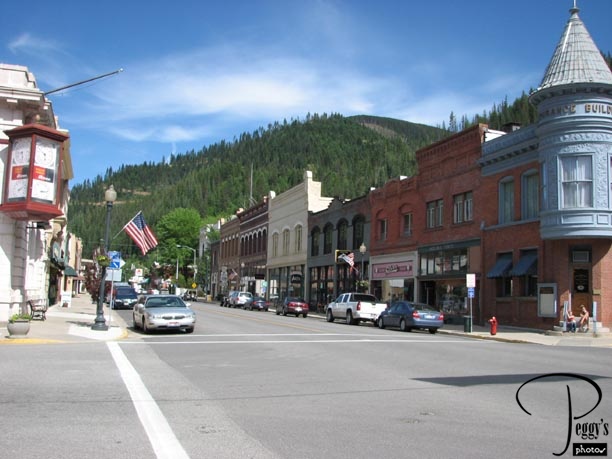
We stopped at the town of Wallace, Idaho, an old mining town, off the I–90. Colonel Wallace (not really a colonel) purchased 80 acres of land that became the present city. Silver was discovered here in the 1880s. By 1887, downtown Wallace was well–established. However, a fire destroyed almost the entire business district in 1890, but Wallace was soon rebuilt, with most of the new brick structures still standing. The entire town of turn–of–the–century buildings is listed on the National Registrar of Historic Places. It is like walking around a movie set and movies have been made here, notably “Tornado,” “Heaven’s Gate,” and “Dante’s Peak.” Also, of note, Lana Turner was born in Wallace.
Wallace, Idaho

We stopped at the town of Wallace, Idaho, an old mining town, off the I–90. Colonel Wallace (not really a colonel) purchased 80 acres of land that became the present city. Silver was discovered here in the 1880s. By 1887, downtown Wallace was well–established. However, a fire destroyed almost the entire business district in 1890, but Wallace was soon rebuilt, with most of the new brick structures still standing. The entire town of turn–of–the–century buildings is listed on the National Registrar of Historic Places. It is like walking around a movie set and movies have been made here, notably “Tornado,” “Heaven’s Gate,” and “Dante’s Peak.” Also, of note, Lana Turner was born in Wallace.
Wallace, Idaho
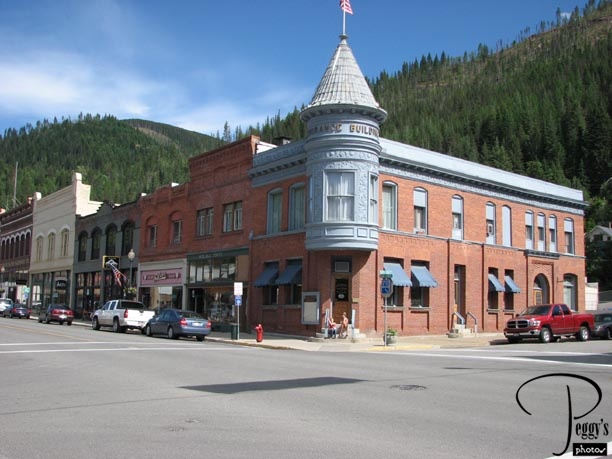
The Rossi Insurance Building, 1890. Its second story and turret was added in 1895.
Wallace, Idaho
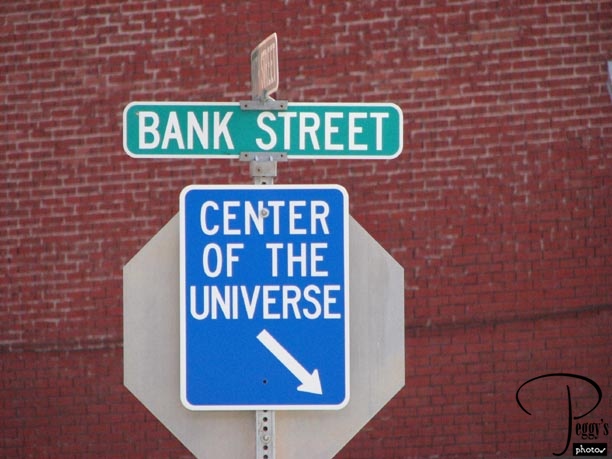
“Center of the Universe” direction sign on the side of the Rossi Insurance Building. We saw this sign and questioned it among ourselves but didn’t take it seriously enough to ask about it at the tourist office.
Wallace, Idaho
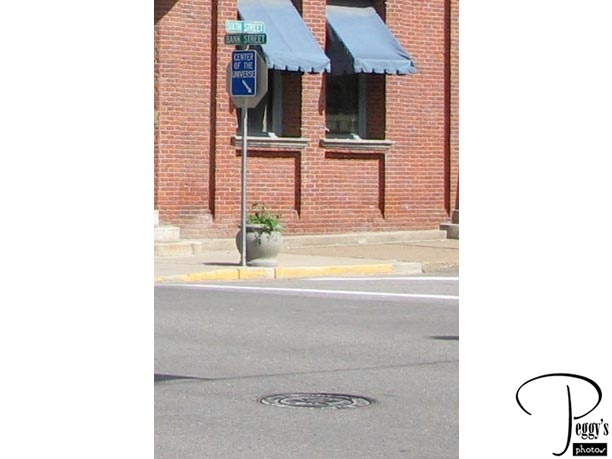
However, when I got home, I looked on the Internet for information about it. The sign is pointing to the manhole sewer cover in the front of this photo. The Center of the Universe monument (the manhole cover) was officially dedicated by the mayor of Wallace on September 25, 2004, with the following: “The Mayor’s Proclamation I, Ron Garitone, Mayor of Wallace, Idaho, and all of its subjects, and being of sound body and mind, do hereby solemnly declare and proclaim Wallace to be the Center of the Universe. Thanks to the newly discovered science of “Probalism” – specifically probalistic modeling, pioneered by the Environmental Protection Agency and the Department of Health and Welfare, and peer–reviewed by La Cosa Nostra and the Flat Earth Society – we were further able to pinpoint the exact center within the Center of the Universe; to wit: a sewer access cover slightly off–center from the intersection of Bank and Sixth Streets. Upon discovering this desecration of the Center of the Universe, we proceeded forthwith to remove said manhole cover and replace it with this fine Monument, directing all who come upon it to the Four Corners of the Universe, these being the Bunker Hill, the Sunshine, the Lucky Friday and the Galena Mines. Let the courses of all who foray upon these vectors into the known and unknown be forever illuminated by the brilliant, shimmering gleamings of silver, lead and zinc to their destinations, wherever they may be. The science of Probalism has its roots in the 2002 EPA Coeur d’Alene Basin Record of decision, and as a syllogism expresses itself thusly: if a thing cannot be disproven, it is thereby proven. Thus if the communities of the Silver Valley cannot absolutely prove themselves to the EPA’s satisfaction to be good and healthy places to live, then this is proof that they require the EPA’s continued meddling in their affairs. Similarly, after a search of the literature, our government–contracted scientists in Moscow, Boise and Seattle have, after years of diligence, been unable to unearth one scintilla of proof that Wallace is NOT the Center of the Universe. In the absence of such proof, we are compelled to conclude that Wallace must therefore BE the Center of the Universe. And it is hereby so ordered and declared, this year 2004, this date, September 25th, this hour, 9:00 PM WUT (Wallace Universal Time).”
Wallace, Idaho
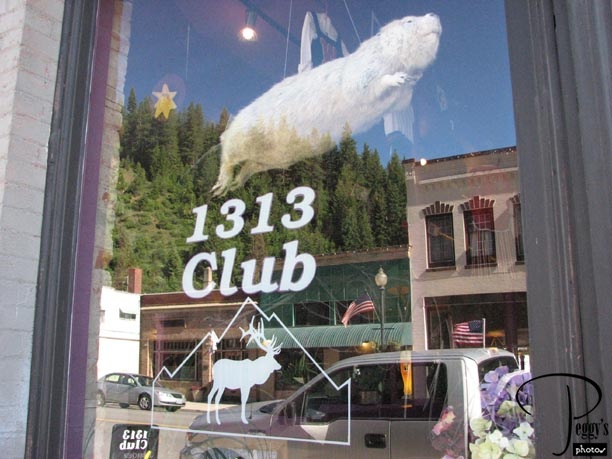
We were thirsty, so decided to go clubbing at the 1313 Club. The 1313 Club has been in the Wallace Building (1891) since the 1930s. One story as to how it got its name was that its original bar was 13 feet by 13 feet. Another story is that there were already 12 bars and 12 brothels then in the mining town of Wallace, so the bar/brothel took the name 1313 Club.
Wallace, Idaho
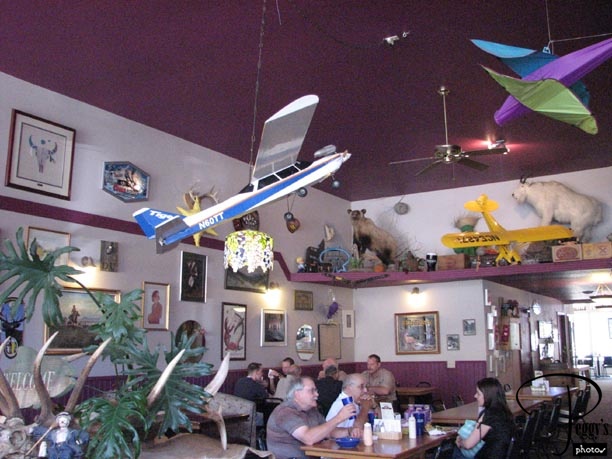
Inside the 1313 Club, which, I think, is only a restaurant now. It had a funky interior and also some interesting items on its menu: Appetizers and Side Orders––popcorn, wing zings (their version of buffalo wings), fried gizzards, artichoke dip with baguettes, BBQ pork and seeds, and drunken gravy fries. For dinner: elk steak ($10.50). For a beverage: the “world famous illy caffee”––$1.50.
Wallace, Idaho
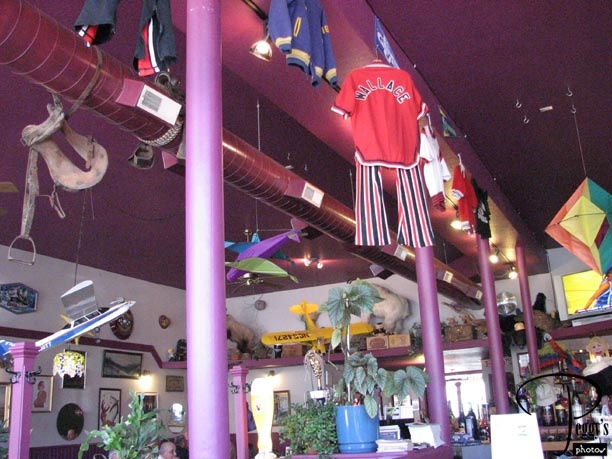
More of the inside of the 1313 Club.
Wallace, Idaho
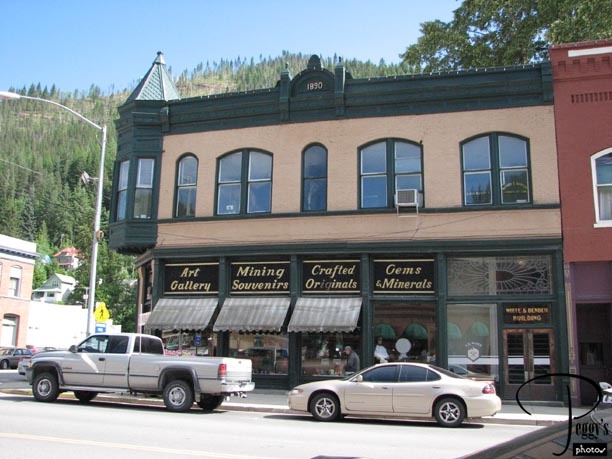
After our clubbing, we took a walk around the town to look at the buildings. The White and Bender Building with a Queen Anne tower.
Wallace, Idaho
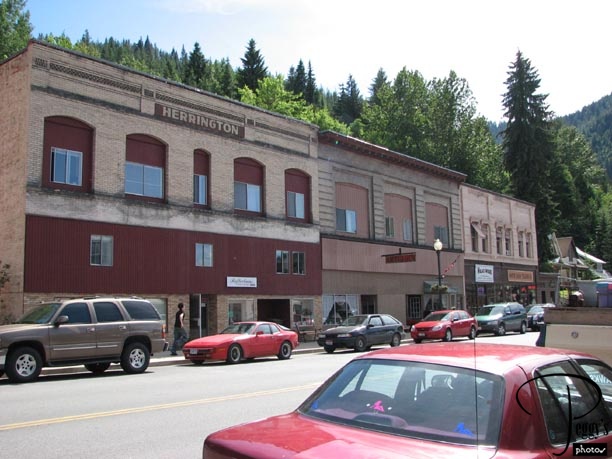
The Herrington Hotel (1898), now an apartment house.
Wallace, Idaho
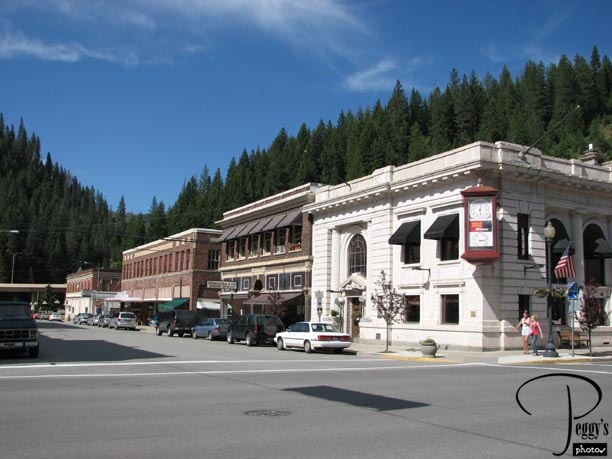
The De Lashmutt Building (1890)––white building on the corner. It was used as Wallace’s first post office and a county courthouse.
Wallace, Idaho
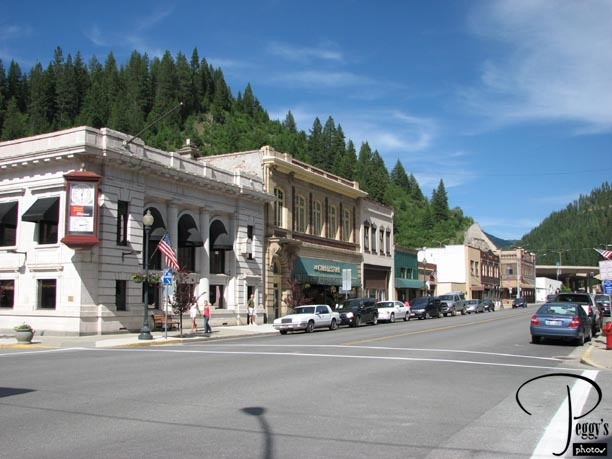
View of a Wallace street on the other side of the De Lashmutt Building.
Wallace, Idaho
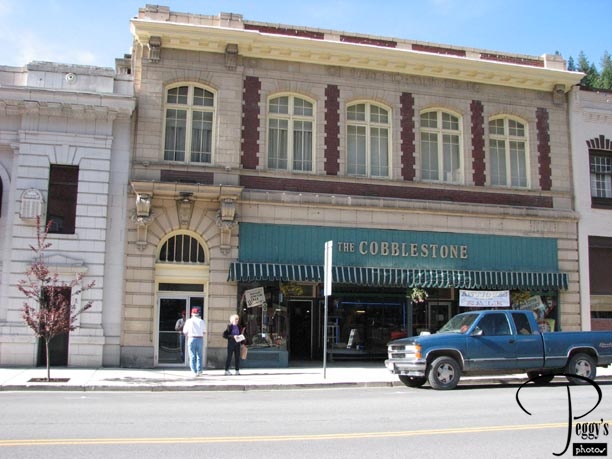
The Masonic Hall and Temple (1917). Lodge meetings are still held here.
Wallace, Idaho
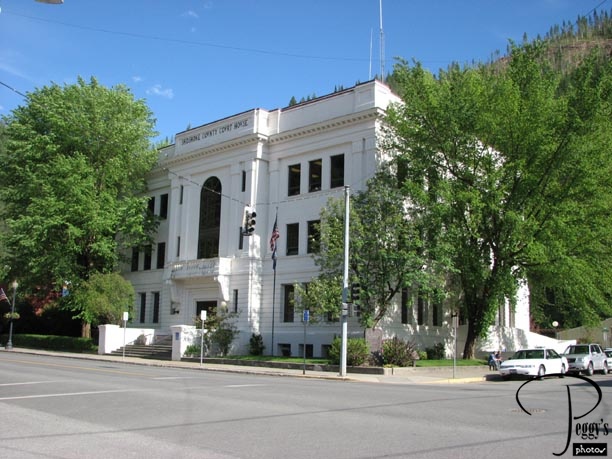
The Shoshone County Courthouse (1905).
Wallace, Idaho
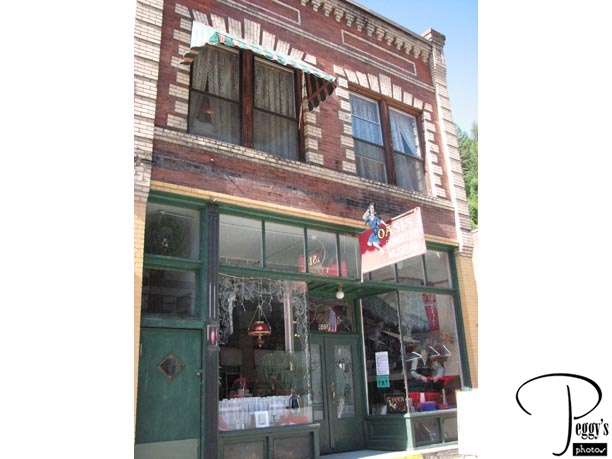
The Bi–Metallic Building (1895) It was a saloon and hotel for most of its existence, then a bordello. It now houses the Oasis Bordello Museum, with its rooms virtually unchanged since its occupants departed from it. Brothels were closed down in Idaho in 1973. You can take a guided tour of the second floor brothel and also of the still and old wine press in the basement. We were too tired to take the tour.
Wallace, Idaho
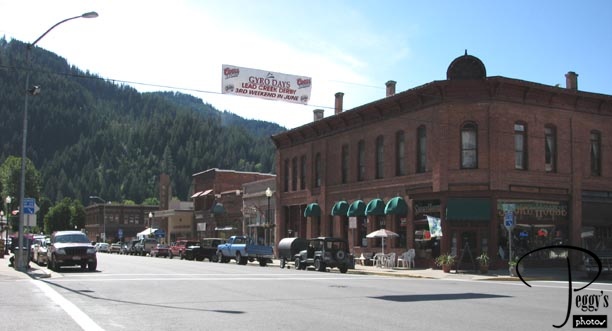
A Wallace street.
Wallace, Idaho
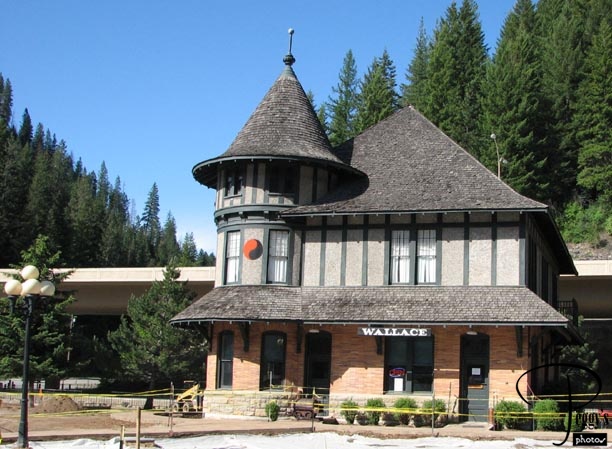
The Northern Pacific Depot and Railroad Museum (1902), built in the chateau style.
Wallace, Idaho
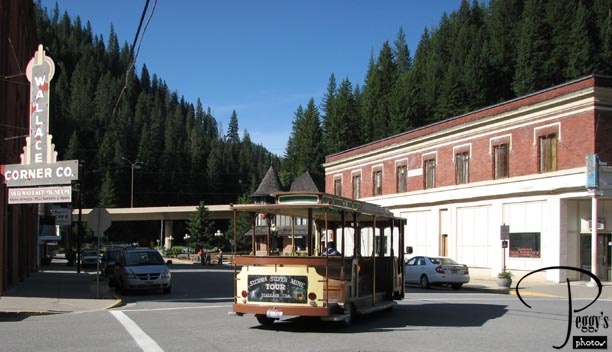
If you have enough time, you can take the Sierra Silver Mining Tour, taking you into a mine with a demonstration of mining machinery and techniques of hard rock mining. Also, you will be given a history of mining and of the town. We didn’t take the tour.
Wallace, Idaho
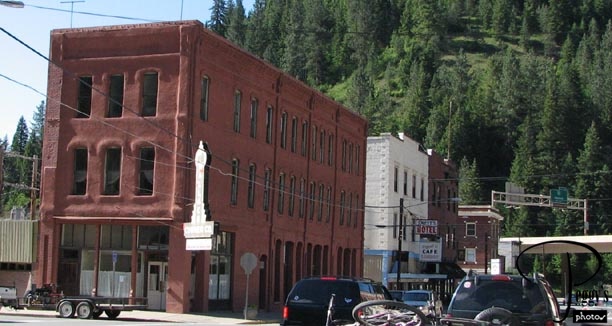
The white building is the Sweets Hotel (1907). The red building is the Wallace Corner Hotel (1890), the oldest building in Wallace. Its east side was built out–of–plumb. The mistake wasn’t noticed until after thousands of bricks had already been laid. They didn’t want to destroy what was already built, so they just continued its building until the wall was straightened out.
Wallace, Idaho
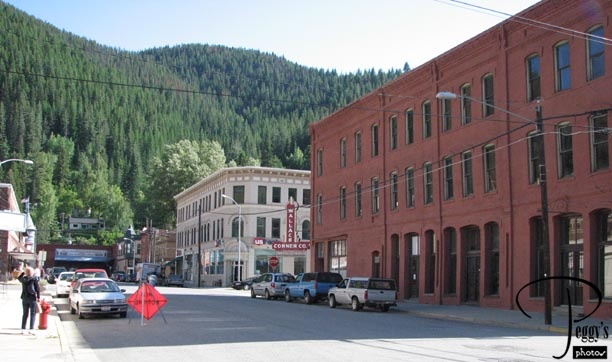
The white building is probably the Holohan–McKinlay Building (1900–01).
Wallace, Idaho
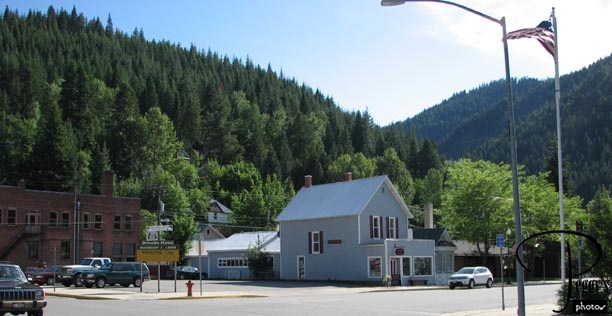
Also, if you have enough time here, you can go on a Wallace Residential Walking Tour of the many Queen Anne bungalows in the hills above Wallace. This building is not a Queen Anne one but you can see that it is from a different era.
Old Mission State Park
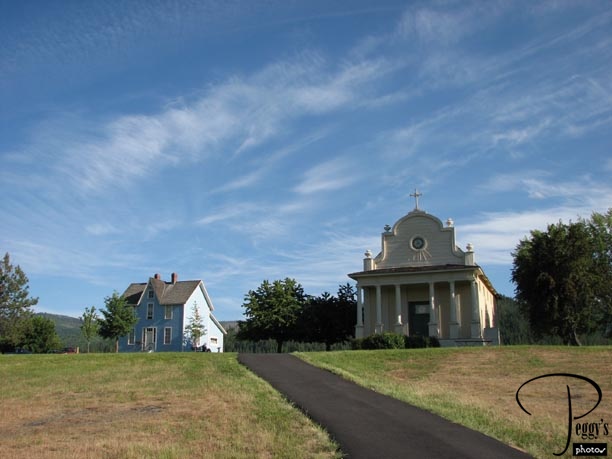
I again took over the driving. Our next stop was the Old Mission State Park in Cataldo, Idaho, right off the I–90. The Old Mission is on the right in the photo; the Parish House is on the left.
Old Mission State Park
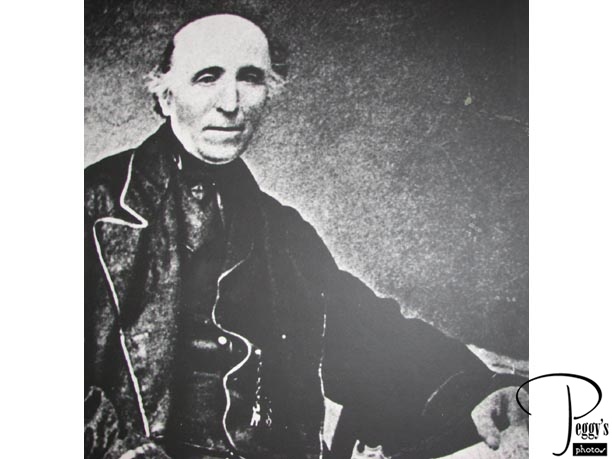
Photo of Father Antonio Ravalli, a Jesuit born in Italy in 1812. He joined Father Pierre–Jean DeSmet’s party of missionaries to the Pacific Northwest. The Couer d’Alene Indians had heard that a neighboring tribe had a “medicine man” of great powers (actually a priest). They wanted this magic for themselves and sent out word that the Blackrobes (as the Indians called the Jesuit priests) would be welcomed among their people. So in the early 1840s, Jesuit missionaries, including Father Ravalli, came to North Idaho.
Old Mission State Park
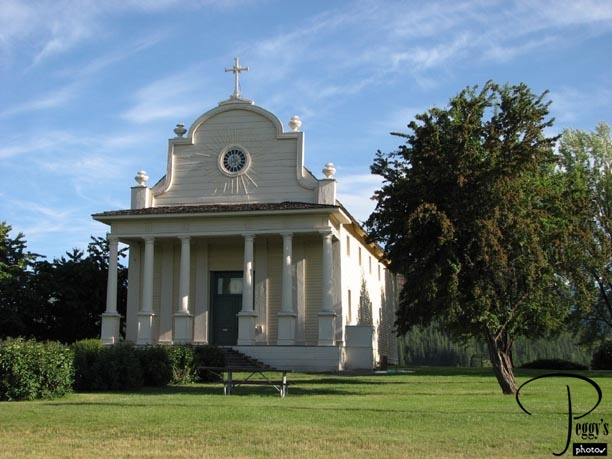
The Old Mission Church was designed by Father Ravali in the Greek Revival style and constructed by the Couer d’Alene Indian tribe in 1850–53. It was moved here from another site in 1887. It is Idaho’s oldest standing building. From its outside and inside, it looks like a structure made entirely of wood. However, in between the exterior and interior walls, there are upright timbers, between which is a filling of straw, grass, and mud.
Old Mission State Park
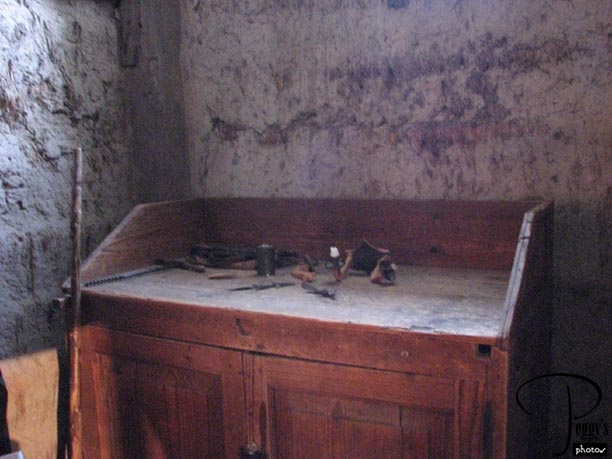
In this photo, the inside wall was removed to show the mud, straw, grass filling.
Old Mission State Park
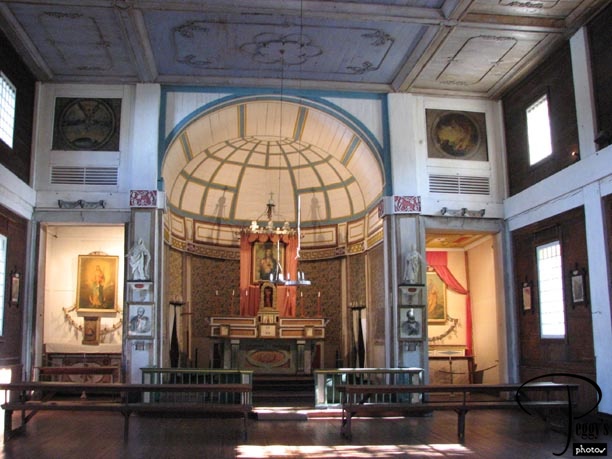
Inside the church. The altar was hand–carved by Father Ravalli, a man of many talents.
Old Mission State Park
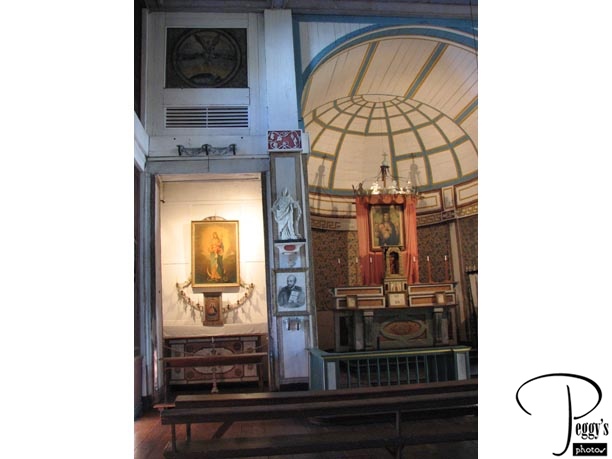
Left–side altar and the main altar. The painting at the very top left is of Heaven, one of two Old World works of art transported to the wilderness by Jesuit priests. The painting was too dark for a good close–up.
Old Mission State Park
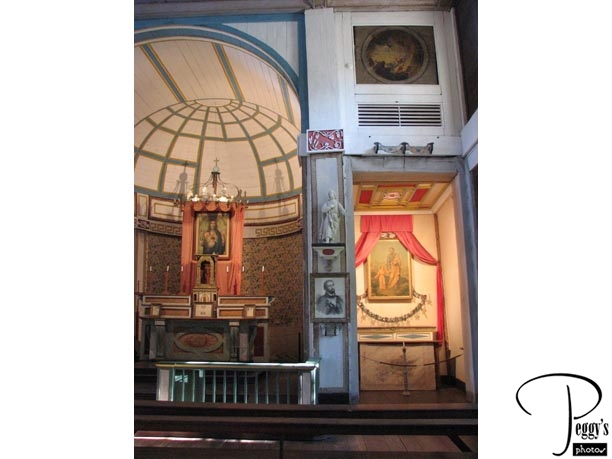
Right–side altar and main altar. The painting at the top right is of Hell.
Old Mission State Park
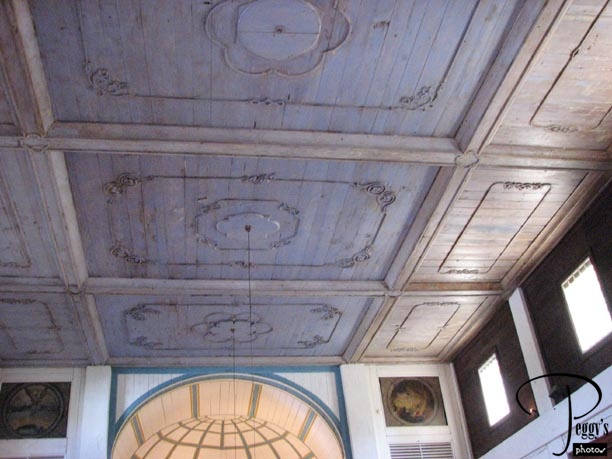
The ceiling panels, each one of a different design, were carved by Brother Francis Huybrechts.
Old Mission State Park
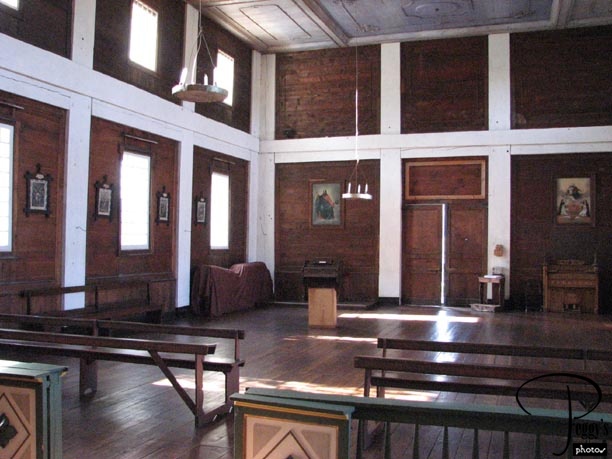
Looking away from the altar.
Old Mission State Park
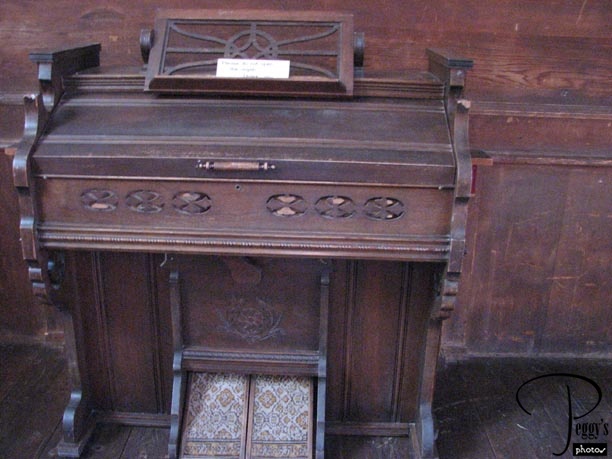
The old organ.
Old Mission State Park
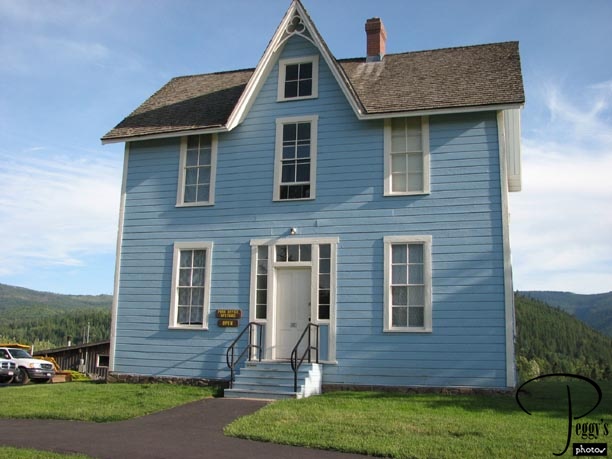
In 1887, a new Parish House was built in a neo–Gothic design, a style that was popular at the time, even on the frontier. The Parish House was the center of business and social life at the mission.
Old Mission State Park
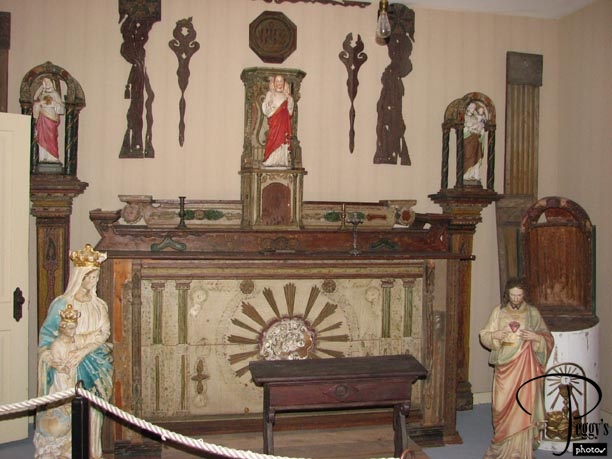
Chapel in the Parish House.
Old Mission State Park
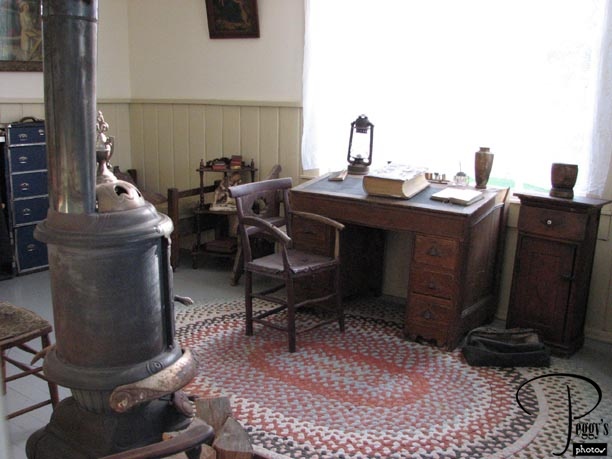
Study in the Parish House.
Old Mission State Park
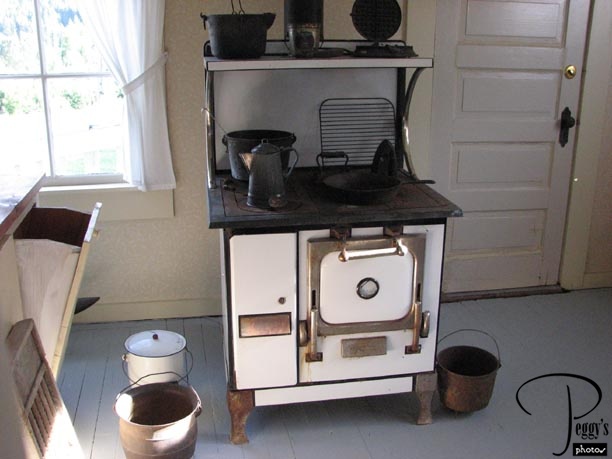
Old stove in the kitchen of the Parish House.
Old Mission State Park
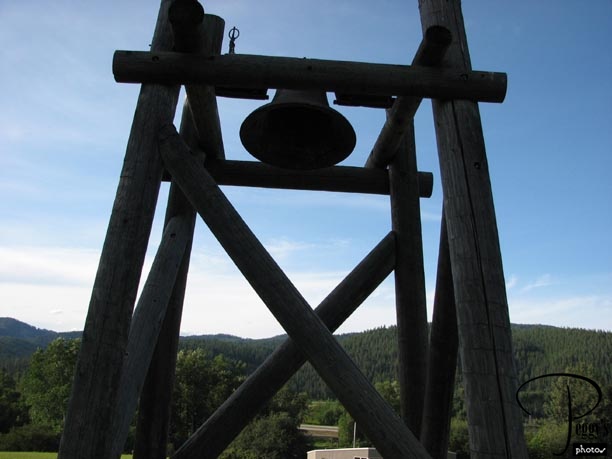
The mission bell. From the Old Mission, we drove to Couer d’Alene to have dinner at Margaret’s house. Then, back to Bayview. We all said good–bye to each other as we were all leaving Bayview the next day. I had a great trip––I very much enjoyed seeing my cousins again and meeting some new relatives and I very much liked North Idaho and especially Montana.


































